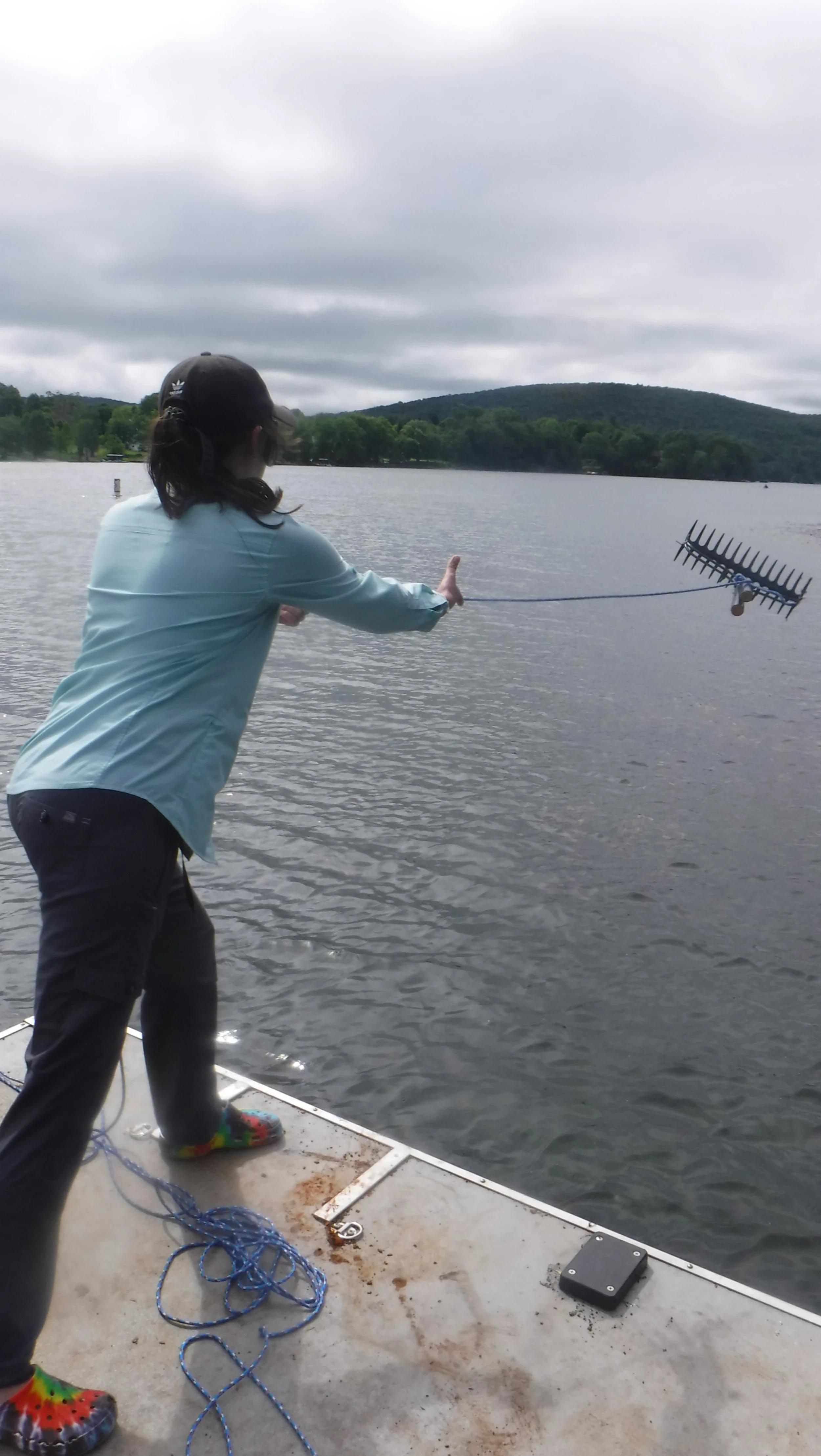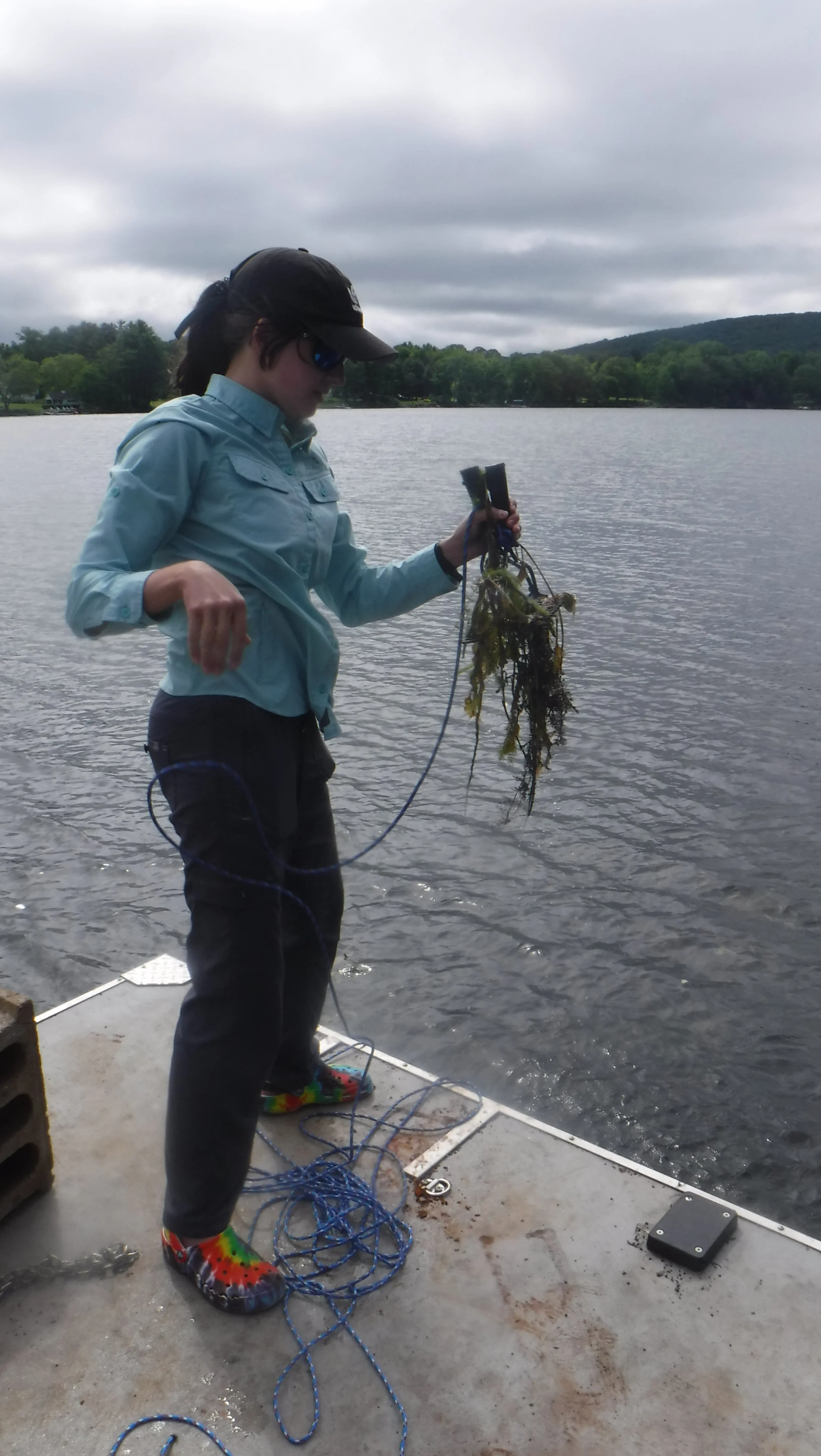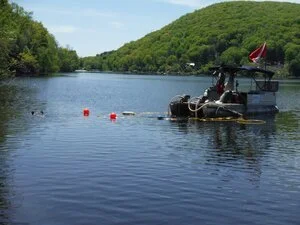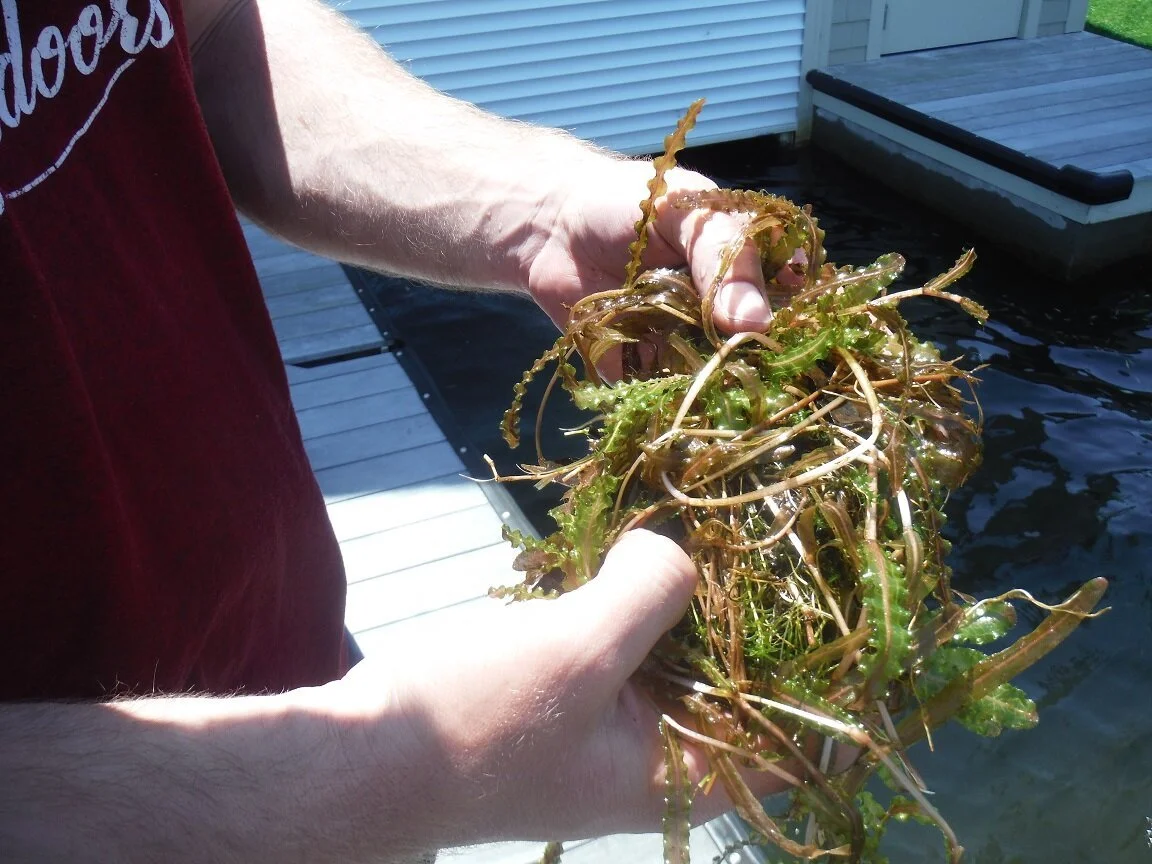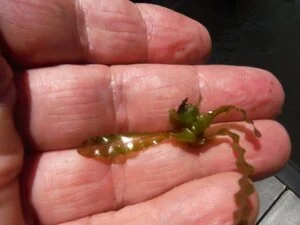The threat of invasive aquatic species
Invasive plants such as Eurasian Milfoil, Curly leaf pondweed and Water Chestnut, as well as Zebra Mussels and some fish, have devastated nearby lakes and present an ongoing threat to Lake Waramaug. We have developed a plan for prevention, early detection and an immediate response to these threats, including the support of a program to require inspection of all motorboats being launched on the lake that may accidentally introduce invasives picked up elsewhere.
News Update:
Curly leaf pondweed (Potamageton crispus) is the dominant non-native invasive aquatic plant in Lake Waramaug. Mechanical harvesting or eradication is accomplished by divers who pull the entire plant from the sediment and place it in a suction hose. The invasive weed is then transported to a weed filter on the deck of the suction harvest barge. Lone divers are also employed to survey and hand pull invasive aquatic weeds. Our goal is to avoid chemical control methods to manage invasive aquatic weed populations. To learn more about our suction harvest consultants, check out New England Aquatic Services.
Curly leaf, along with other invasive aquatic plants, can create monoculture areas in lakes, pushing out important natives, and disrupting lake diversity. It also threatens both swimmers and boats. To keep invasive populations under control and out of the lake, we must remain vigilant and survey the lake consistently, harvest invasives before they spread, and inspect all motorized boats and personal watercrafts.
To learn more about the history of Curlyleaf management in Lake Waramaug, please read the below reports, created by our consultants Northeast Aquatic Research LLC:
Lake Waramaug 2019 Aquatic Plant Report
Lake Waramaug 2020 Aquatic Plant Report
Lake Waramaug 2021 Aquatic Plant Report
Lake Waramaug 2022 Aquatic Plant Report
Lake Waramaug 2023 Aquatic Plant Report
The State has issued an excellent identification guide to Invasive Aquatic Species. Invasive aquatic plants and other marine life present a frightening threat to Lake Waramaug's water quality.
Whereas phosphorus and other nutrients are a continuing problem, our ongoing operations are able to monitor and control their effects to a large degree.
Invasive Species (and there are perhaps 22 that are imminent threats) are omnipresent, unpredictable and potentially disastrous in both the short and long term. They have caused serious and chronic problems in most of the lakes in our region. With some, the discovery of symptoms indicates that we're already too late. Others, when discovered, require immediate action. The best solution is prevention.
The best solution is prevention—through education, boat inspections, and lobbying for enforcement of existing laws against the sale and transport of invasive plants. A vital backup plan is the creation of an Early Detection and Rapid Response Program with reserved funds to combat newly discovered infestations.
The top threats, all known to have caused serious problems in the region, are the following (linked so you can learn more):
4. Water Clover
5. Fanwort
6. Hydrilla
If you encounter suspicious plants or other marine life, please call:
Sean Hayden, Executive Director
860-868-0331
Lake Waramaug Conservancy
50 Cemetery Road
Warren, CT 06754
Education on the Effects of Nutrients
The alarming algae blooms of the 1970s were, in large part, the result of a flow of nutrients, primarily phosphorus, into the lake due to the careless use and disposal of potentially harmful farm and household products. Task number one, therefore, was to educate those who lived in the watershed about these harmful effects, the availability of alternative laundry, dishwashing and other products and methods of containing waste. This was accomplished through the media, letters, posters and personal appeals. The response was overwhelmingly positive. We were off to a good start.


